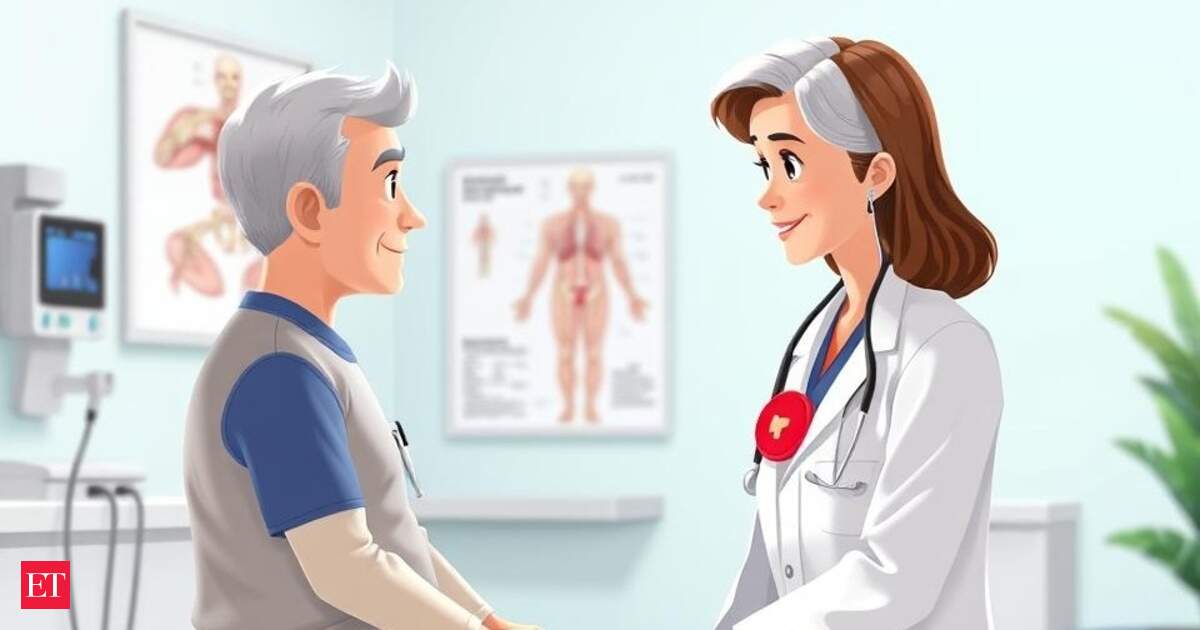Dr. Jennifer Maynard of the Mayo Clinic and other experts warn that a few illnesses must be treated quickly, so knowing when to consult a doctor is important to stay safe, as per the Prevention report. Maynard said, “Certain illnesses and injuries should be evaluated and treated within a narrow time frame—often the sooner, the better,” as quoted in the report.
ALSO READ: Could Air Canada flight attendants’ strike ruin your summer vacation plans? Here’s what travelers need to know
Here are 27 warning signs that indicate that your body may be in real trouble, as complied by the Prevention report.
1. Facial drooping or slurred speech
Could signal a stroke, so seek emergency help immediately, ideally within 60 minutes, as per the report.
2. Severe vomiting or diarrhea
Dehydration can set in fast, so it’s better to get help if symptoms last more than 1 day or worsen, as reported in the Prevention report.
3. Deep wounds
Stitches are most effective within 12 to 19 hours. Infection risk rises quickly.ALSO READ: Traverse City Walmart Stabbing: 11 injured, suspect in custody as police probe motive — social media flooded with videos, images
4. Swollen, bruised, or painful limbs
May be a broken bone. Get an X-ray as soon as possible to avoid long-term damage.
5. Painful, itchy rash or blisters on one side
Could be shingles. Antivirals work best within 48 to 72 hours.
6. Unusual vaginal discharge or burning
May signal an STI. Quick treatment prevents complications like infertility.
7. Trouble getting pregnant
Talk to a fertility expert if trying for 6 to 12 months without success, as reported in the Prevention report.
8. Sudden weight loss
Could indicate ovarian cancer or an endocrine or autoimmune issue, according to Dr. Kecia Gaither, M.D., OB/GYN and maternal fetal medicine physician, as reported in the Prevention report.
9. Frequent heartburn
Might be a heart issue, not just indigestion. Especially concerning in women.
10. Skin changes or evolving moles
Watch for asymmetry, color changes, or growth, which are possible signs of melanoma.
11. Sudden hair loss
Can signal thyroid disease, vitamin deficiencies, or autoimmune problems, as reported in the Prevention report.
12. Unusual vaginal bleeding
Spotting outside your period, or after menopause, needs evaluation. Could be uterine cancer.
13. Constant thirst
May point to diabetes, especially with fatigue or nausea.
14. Breast changes
Lumps, swelling, nipple discharge, or skin dimpling can indicate breast cancer.
15. Jaw, shoulder, or back pain
Could be a subtle sign of heart disease, especially in women.
16. Severe or sudden headaches
May signal a stroke, aneurysm, or brain tumor. Don’t try to sleep it off.
17. Black, tarry stools
May indicate internal bleeding. Seek urgent care.
18. Shortness of breath
Could be caused by infection, blood clots, or heart issues.
19. Chronic fatigue
Ongoing exhaustion could be a sign of anemia, thyroid disease, or mental health conditions.
20. Frequent urination
Often linked to UTIs or diabetes, especially with burning or thirst.
21. Sudden mood changes
Could point to mental health struggles or hormonal shifts.
22. Loss of appetite
May signal cancer, thyroid dysfunction, or emotional distress.
23. Unexplained weight gain
Fast belly weight gain can mean heart or liver issues, as reported in the Prevention report.
24. Blurred or sudden vision loss
Can be a sign of a stroke or diabetes.
25. Leg or ankle swelling
Persistent swelling may signal heart, kidney, or liver issues, as reported in the Prevention report.
26. Excessive sleeping
Can relate to depression or underlying illness. Get checked if it’s unusual.
27. Confusion or brain fog
If you’re not thinking clearly, it could signal infection or a neurological issue, as reported in the Prevention report.
FAQs
I’m losing weight without trying, should I see a doctor?
Absolutely. Unexplained weight loss can sometimes be an early sign of serious conditions, as per the Prevention report.
Is it normal to feel thirstier than usual?
Not always. Constant thirst, especially with frequent peeing or fatigue, can be a sign of diabetes, as per the Prevention report.
